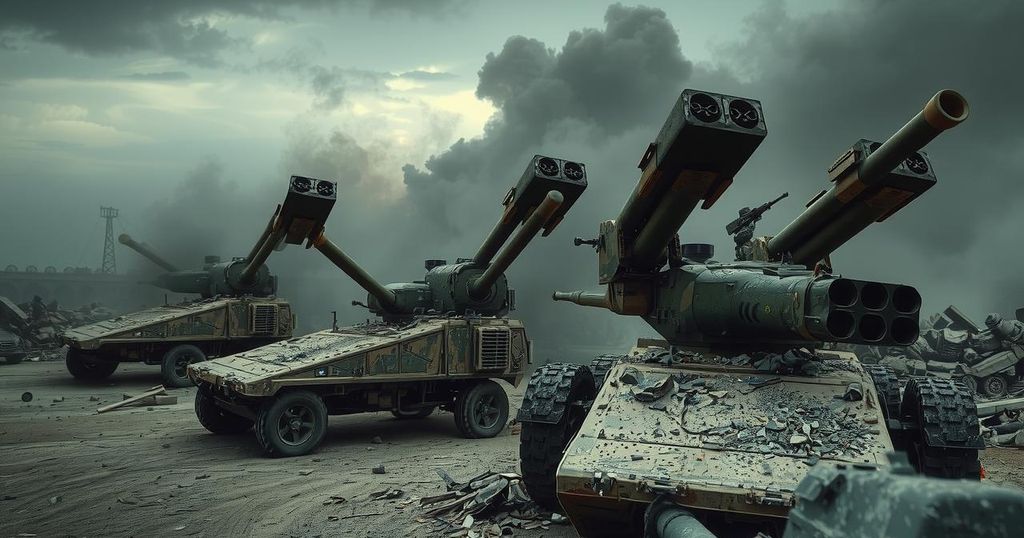World news
ASIA, DEFENCE, EUROPE, EUROPE/ASIA, FORBES, KOKSAN, KOREA, NORTH, KOREA, SOUTH, KURSK, KURSK OBLAST, KYIV, MILITARY, MILITARY CLASHES, MISSILE ATTACK, MOSCOW, PYONGYANG, RUBICON CENTER OF ADVANCED UNMANNED SYSTEMS, RUSSIA, RUSSIAN ATTACKS, SEOUL, SOUTH KOREA, SUDZHA, UKRAINE, UKRAINIAN 14TH REGIMENT OF UNMANNED AERIAL SYSTEMS, US, WAR
Amira Khan
0 Comments
Ukrainian Strike on North Korean Howitzers in Kursk: Implications and Insights
The Ukrainian 14th Regiment reportedly damaged three North Korean M1989 howitzers with a HIMARS strike in Kursk. The M1989 is a 40-ton self-propelled artillery first introduced in 1989, capable of significant firing ranges. Previous operations indicate a pattern of ongoing conflict, with heavy casualties reported on both sides, particularly in the Kursk region.
The Ukrainian 14th Regiment of Unmanned Aerial Systems reportedly damaged three North Korean M1989 howitzers during a coordinated strike, as reported by Forbes. On or around March 18, drone operators identified the howitzers concealed amidst treelines in Kursk Oblast, Russia. The team relayed the coordinates to a Ukrainian battery armed with High-Mobility Artillery Rocket Systems (HIMARS), which launched at least one M30 rocket, yielding submunitions that targeted the howitzers and their crews.
The M1989 Koksan is a heavy self-propelled artillery system developed in North Korea, first publicized in a 1989 parade, weighing approximately 40 tons and featuring a unique 170-mm caliber. This design allows for significant firing range, with conventional shells effective up to 40 kilometers and specialized rounds extending to 60 kilometers. Forbes indicated that North Korea has supplied Russia with a multitude of military vehicles, including these howitzers and various missile systems.
Prior to the aforementioned attack, Ukrainian forces had successfully destroyed at least one M1989 and several Bulsae-4 anti-tank launchers. Additionally, a Russian drone inadvertently destroyed a North Korean air defense system. The situation in Kursk has deteriorated recently, as Ukrainian forces largely held the area until a large-scale assault by the Rubicon Center of Advanced Unmanned Systems severed their supply line in Sudzha, prompting a retreat and resulting in the loss of equipment.
Despite sustaining significant losses, reports cite that Ukrainian drones and artillery continued to engage Russian and North Korean forces in Kursk. According to Forbes, the operation in Kursk has been described as a Pyrrhic victory for Russia and North Korea, incurring heavy casualties and material losses, while Ukrainian losses remained comparatively lighter.
In summary, the Ukrainian attack on North Korean M1989 howitzers exemplifies the ongoing military challenges within the conflict between Ukraine and Russian-backed forces. While Ukrainian forces have faced setbacks, they continue to inflict damage on their adversaries. The sustained exchange of military operations highlights the complexity and volatility of the situation in the region, indicating both the strategic significance of Kursk and the high cost of the conflict for all parties involved.
Original Source: euromaidanpress.com




Post Comment